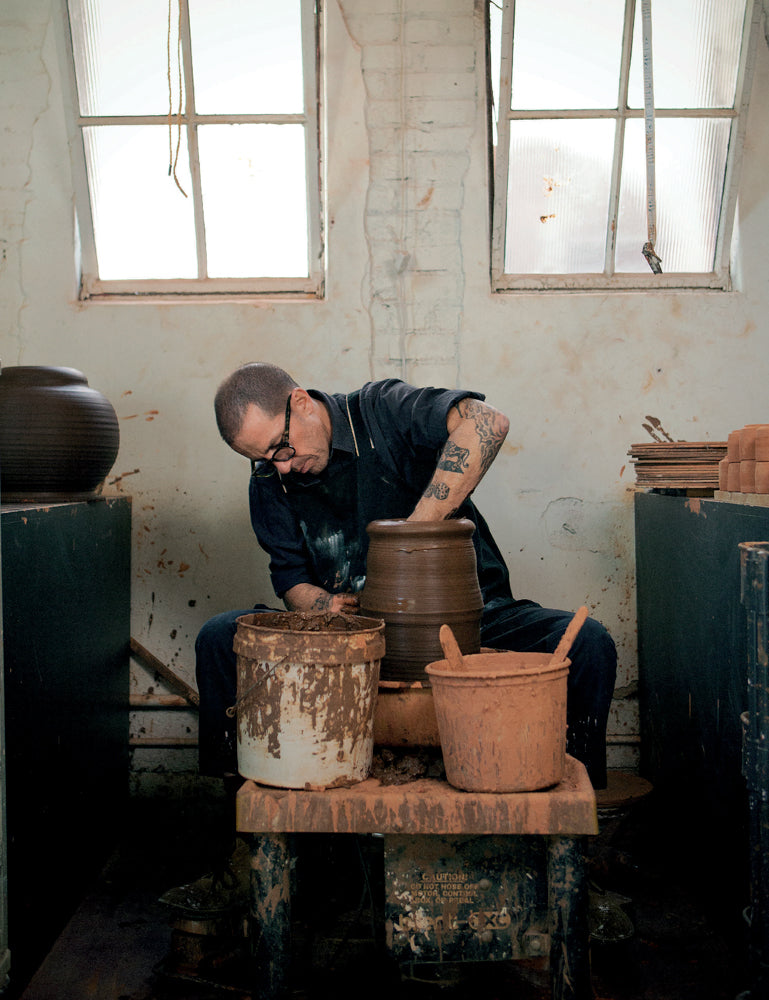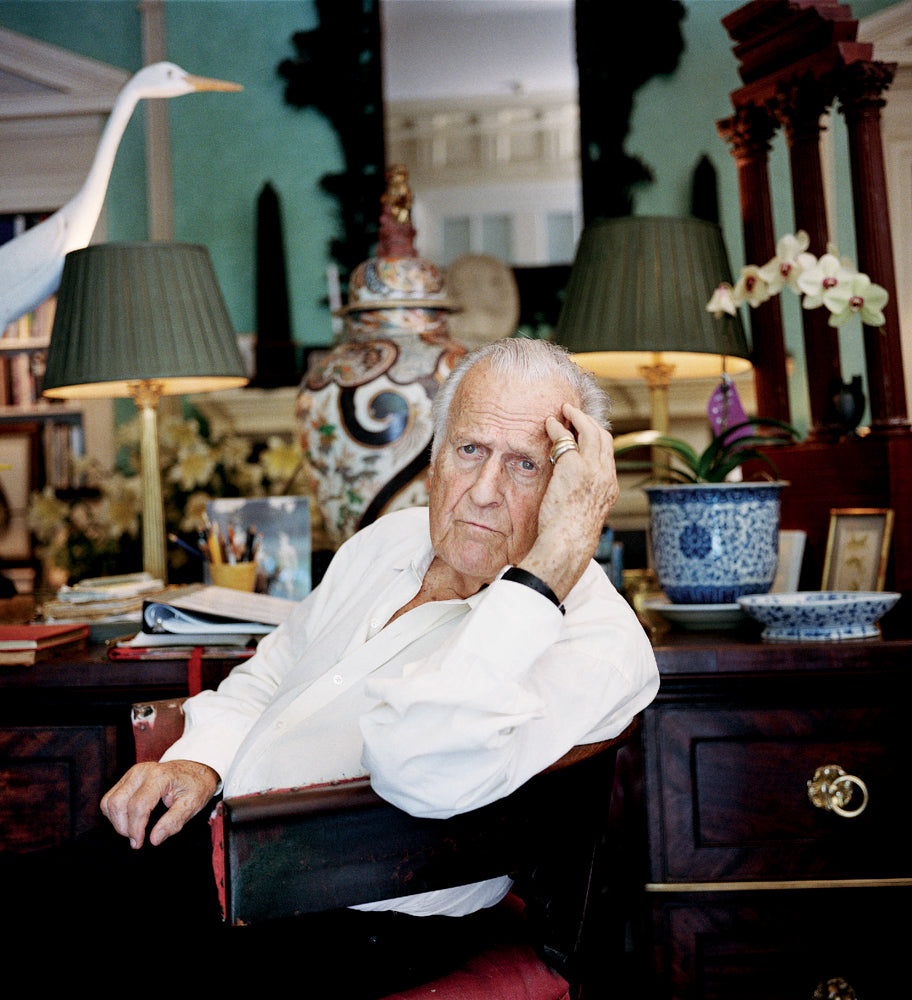
Adam Silverman
ADAM SILVERMAN

The California potter and Heath Ceramics honcho on the highs and lows of life at the wheel.
If Los Angeles is the contemporary center of enlightened artisanship, ceramicist Adam Silverman’s light-flooded studio is its inner sanctum. Silverman’s pots — glazed, cracked and re-glazed to resemble hoarfrost — are widely admired, not least in Japan, where Tadao Ando and Takashi Murakami are collectors. Silverman is routinely described as the face of a new generation of artists working in clay, a descriptor he regards as a kind of convenience. “A lot of people say they’re painters who use clay, ceramicists, or ceramic artists,” he tells me across a rack of handsome, glazed pots and lampshades destined for a house in Hancock Park. “I prefer to say I’m a potter.”
The thread of pragmatism in that self-description also suggests purpose. Silverman initially trained and practiced as an architect before heading up the Beastie Boy’s streetwear merchandising business. The first transition, he says, was more of a fade out/fade in. But not the second. “The decision to go pro in pottery was a fantasy I nurtured. I used to be in the service side of life, so part of the appeal was always to be alone, quietly working by myself. When the time came, the decision was clear.”
Silverman’s path in clay is two-tracked: as a singular, experimental potter, and as the consultant behind the revival of the popular San Francisco pottery manufacturer Heath Ceramics. The publication of a monograph last year helped cement Silverman’s reputation as a leading potter among the new school of practitioners, among them Shepard Fairey and New York’s Satan Ceramics.
Los Angeles has long been friendly to potters. From the 1940s, it was home to a branch of highly innovative artists like John Mason, Ken Price, and Peter Voulkos, who each laid claim to placing clay on an equal footing with painting. There was a post-modernist revival of pottery in the late seventies and early eighties, then nothing. The practice went quiet for twenty years before reviving after the turn of the century.
“People here talk about the space and the light. It’s true there’s a little less pressure. Time is a little slower. You can still get on it, cranking and stressing, if you want to, but what you do with the space is up to you. The number of people here making things out of clay, fabric, yarn, or felt is bananas.”
New interest in ceramics can be interpreted, in part, as a response to the intense commodification of art and a renewed emphasis on perfection — what Silverman calls “the perfection of [Jeff] Koons production.” The imperfection of pottery is a substantial part of its intimacy and appeal. “These pots are a reaction against the idea of striving for perfection,” he says.
But it’s the discernible new interest in ceramics, one of the fastest- growing mediums in contemporary art, that’s helping to drive Silverman’s reputation higher. Pottery offers an earthiness, a connection to history that dates back in human history almost as far as it’s possible to travel. In New York, Silverman’s a regular visitor to the Greek and Roman galleries at the Met. We discuss the Berlin Painter, considered the greatest Attic Greek pottery artist of the fourth century BC.
“It’s a nice lineage to be part of,” Silverman says. “It’s the only thing that really made any sense to me as something that could be, or is, my own.”


